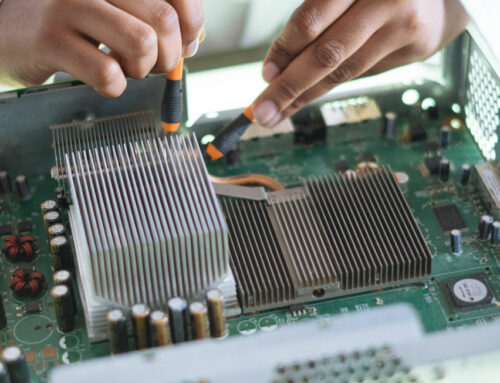The need for speed is growing rapidly in businesses of all sizes. More data, graphics, and video usage are combining with high performance expectations across departments. A network that isn’t keeping up can mean that the business isn’t keeping up with customers or competitors. Your company may be getting by on Gigabit Ethernet speed for now, but for a lot of companies, it’s time to seriously consider upgrading to 10 Gigabit Ethernet (10GbE). Today, we discuss advantages of 10GbE, as well as options for upgrading your Ethernet speed if 10GbE is not yet within your budget.
Benefits of 10GbE
The pros of a faster network are largely self-explanatory, but sometimes you need more justification to sell management on the upgrade or to complete a thorough cost/benefit analysis. Here are some of the reasons that we recommend considering 10GbE:
You need speed for virtualization and WiFi: Yes, upgrading to 10GbE has cost implications. These include the hardware, network downtime, and staff time needed to implement the project. However, if you have bottlenecks proliferating between your edge and your core or aggregation layers, those slow-downs could be costing you in user productivity. As more companies rely on WiFi, particularly as they upgrade to 802.11ac Wave 2 for greater wireless bandwidth, a faster Ethernet backbone becomes critical to operations and profitability.
If this is something that you are currently dealing with, then some basic calculations on the potential ROI of investing in 10GbE uplinks can go a long way in justifying the upgrade. Even if you haven’t received a lot of user complaints yet, you definitely want to be monitoring your network utilization and its trends. Those slow-downs may be just around the corner, and transitioning to faster uplinks may prevent a problem before it begins.
If you’re utilizing server virtualization, the case for 10GbE may be even stronger. By increasing your number of virtual machines, you’re opening the door to more network traffic. Unless you have the connection speeds to support it, you run the risk of slowing down your I/O and your business.
Make your network more scalable: Whenever you make changes to your network, you know that you’re not just doing it to serve the business needs of today. You’re always looking down the road to ensure that your investments in time and equipment will continue to benefit the company as it grows and evolves. 10GbE for most organizations means that you have room to grow while maintaining performance levels. Plus, if and when your need for speed exceeds 10GbE, you’ll be able to aggregate links easily to multiply your throughput.
Reduce complexity and physical footprint: More hardware means more potential points of failure and more maintenance time. One advantage of 10GbE is that you will need less cabling and fewer NICs per server to achieve the same speed on your current Gigabit Ethernet. Less hardware also means you may be able to reduce power consumption and cooling costs, and save some physical space.
Not Ready for 10GbE?
A hurdle for many companies that need more speed is the cost of upgrading their cable – either to fiber or to Category 6a or higher copper. Fortunately, there is an interim solution for those who need more than one Gigabit at the access layer but are not yet able to afford a full 10GbE upgrade.
Manufacturers now offer several switches that can support multi-gigabit speeds on Category 5e/6 cables. Consider Cisco’s Catalyst 4500E, Catalyst 3850, Catalyst 3650, and Catalyst 3560-CX series. These switches support Power over Ethernet (PoE) as well, which can reduce your installation costs.
If you’re thinking about upgrading your network, it’s a good idea to consider 10GbE. Operational performance, faster WiFi demands, and virtualization all require speed, and that need is only expected to grow. If 10GbE is simply not within reach, you do have options for making your network faster with a smaller investment.
Planning an upgrade? Contact a Summit rep to discuss equipment options that will fit your needs and your budget.




